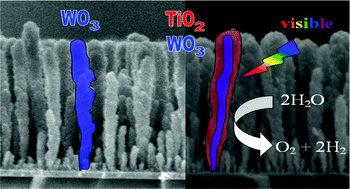Quasi-core-shell TiO2/WO3 and WO3/TiO2nanorod arrays fabricated by glancing angle deposition for solar water splitting†
Abstract
Unique quasi-core-shell

* Corresponding authors
a
Department of Physics and Astronomy, University of Georgia, 220 Riverbend Road, Athens, Georgia, USA
E-mail:
wilsonasmith@gmail.com
b Department of Chemistry and Biochemistry, University of California, Santa Cruz, 1156 High St., Santa Cruz, CA, USA
Unique quasi-core-shell

 Please wait while we load your content...
Something went wrong. Try again?
Please wait while we load your content...
Something went wrong. Try again?
W. Smith, A. Wolcott, R. C. Fitzmorris, J. Z. Zhang and Y. Zhao, J. Mater. Chem., 2011, 21, 10792 DOI: 10.1039/C1JM11629K
To request permission to reproduce material from this article, please go to the Copyright Clearance Center request page.
If you are an author contributing to an RSC publication, you do not need to request permission provided correct acknowledgement is given.
If you are the author of this article, you do not need to request permission to reproduce figures and diagrams provided correct acknowledgement is given. If you want to reproduce the whole article in a third-party publication (excluding your thesis/dissertation for which permission is not required) please go to the Copyright Clearance Center request page.
Read more about how to correctly acknowledge RSC content.
 Fetching data from CrossRef.
Fetching data from CrossRef.
This may take some time to load.
Loading related content
